MARKETING
Tinuiti Takes Stages at Cannes to Talk AI and Employee Well-being
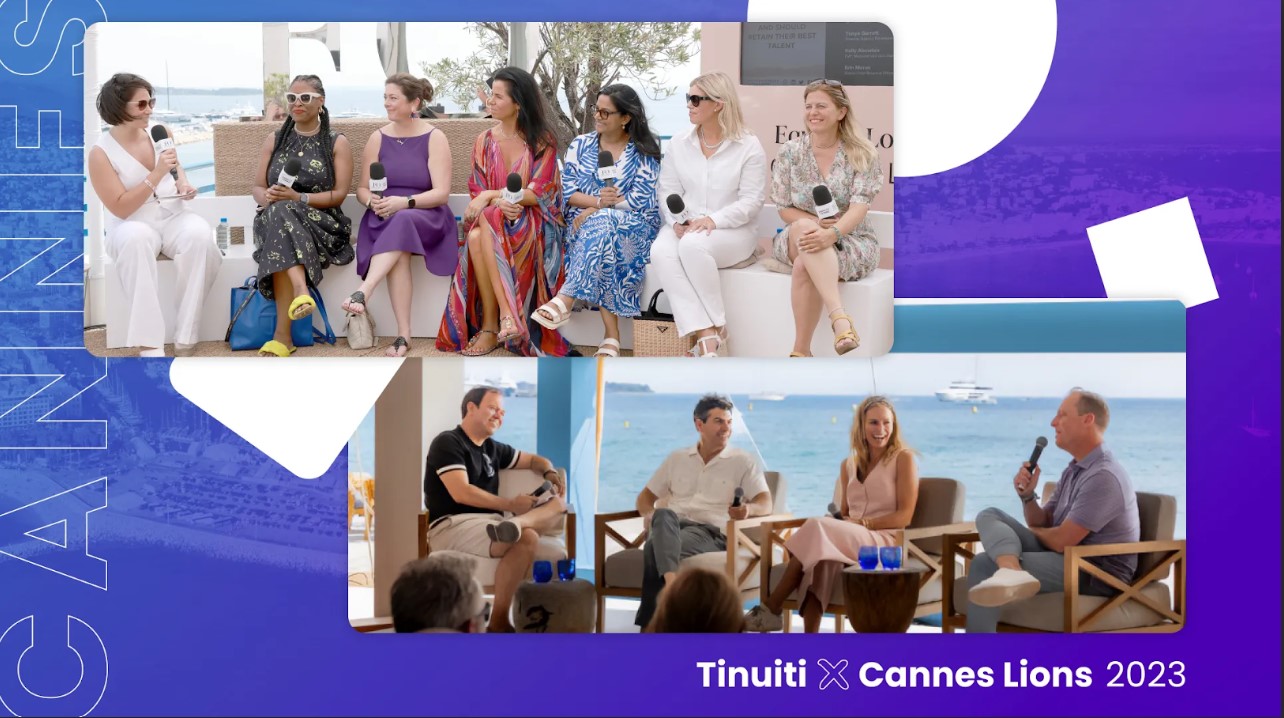
Last week, leaders from Tinuiti spoke on different stages at the Cannes Lions International Festival of Creativity in France. The festival is the largest annual event where nearly 15,000 professionals from the creative marketing industry worldwide come together.
As the leading independent performance marketing agency and most recently named Microsoft Global Client Partner of the Year, Tinuiti joined top brands and partners to discuss performance marketing and the major industry shifts leading into 2024.
Tinuiti’s President Jeremy Cornfeldt and Chief Marketing Officer Dalton Dorné, were asked to weigh in on the most pressing topics facing the industry today. Their talks covered how to use AI to achieve business success, avoiding employee burnout, and CMO trends.
If you weren’t able to attend, check out our full recap of the event including top takeaways from our own experts at Cannes below!
Tinuiti Explores the Era of Innovation and the Significance of Agencies Embracing Generative AI
Generative AI is quickly becoming an essential tool for companies to innovate, increase efficiency, and drive creativity. The big questions are: How can independent agencies lean into this new technology, what advantages does it bring, and what will it mean for new and future talent?
On Tuesday, June 20th, Cornfeldt spoke at the Microsoft Agency Disrupter Series on “The age of Innovation and the Implications of Agencies” held at the Microsoft Beach House.
Jeremy Cornfeldt, President at Tinuiti spoke at the Microsoft Agency Disrupter Series on “The age of Innovation and the Implications of Agencies” held at the Microsoft Beach House.
“Imagine an office packed full of summer interns – really good summer interns. That’s a good way to think about where Generative AI is at right now,” Cornfeldt said.
“It’s nice to have the extra support, but it doesn’t know enough yet to replace us. But if we start to embed elements of it in our everyday work, we won’t get caught on the back foot as it evolves because we’ll be evolving along with it. We must already be embedding elements of it in our everyday work. This way when those interns have finally graduated and are fully qualified, we’ll be able to put them to work for us in ways that will make our work (and our lives) better.”
The panel, including experts Shannon Pruitt, Global Chief Content and Partnership Innovation Officer at Stagwell, and Price Glomsk, SVP Global Media and Partnerships at PMG, discussed a variety of AI-related topics such as:
- What do you see as the short-term opportunities from this technology?
- Independent Agencies have a reputation of adopting technology quickly, are you running or walking in view of Generative AI?
- We have heard that there are differences in how agencies and brands are reacting to and adopting Gen AI – brands seem to be more cautious – does that statement hold true and what are you doing to educate them?
According to Cornfeldt, over the next five years, company success will be defined by how effectively agencies and brands can use generative AI and automation technologies to reimagine their work processes, eliminate mundane tasks, and unleash human creativity and strategic thinking.
“We’ve embraced JOMO (The Joy of Missing Out) philosophy with an objective to delegate routine, mundane tasks to machines, thereby enabling our team to focus on more engaging, valuable work for our clients. We recognize that the future of work is increasingly automated and there’s minimal satisfaction in performing repetitive, low-skill tasks. As we continue to evolve, the focus shifts away from hands-on-keyboard tasks and moves towards using our cognitive abilities to deliver unprecedented value for our clients and stakeholders,” he says.
“In essence, our success will hinge on more than our capacity to incorporate new technologies. It will be determined by our ability to transform our operations, empower our employees, and enhance the value delivered to our clients. The true measure of our progress will be in the symphony created by humans and machines working together, each amplifying the other’s strengths, to deliver unprecedented outcomes.”
Tinuiti’s Insights on Retaining Top Talent: A Focus on Empowering Women
The need for creative women and diverse talent in the workforce has reached unprecedented levels. Unfortunately, at the same time, employee burnout is also surging to new heights. According to recent reports, more than half of working women say their stress levels are higher than they were a year ago.
Dorné joined a panel discussion for an honest conversation on employee burnout (specifically for women) and “How Companies Can and Should Retain Their Best Talent.”
During the event, moderators posed an important question to the panel members: How can companies prevent employee burnout in a post-Covid environment? According to Dorné, Tinuiti’s recent launch of “Project Connection” has been instrumental in maintaining valuable friendships that stretch far beyond the walls of an office boardroom.
“Coming out of the pandemic, sixty percent of our workforce was remote – before it was only thirty. So, one of the things we did at Tinuiti was we closed most of our offices where that population had shrunk. We kept New York and San Diego open but we reinvested the money from those offices into an initiative called ‘Project Connection,’, Dorné said. Project Connection was mentioned as one of the factors in Inc. Best Workplaces award to Tinuiti in 2023, the sixth year Tinuiti has been named.
“What you really miss from work is the relationships and the personal time and that overall connection. It’s not just about being at a desk or a conference room. At Tinuiti, we have Friendship Funds…. If you live in the same city as someone, even if you’re not part of the same team — you can still get together! All you have to do is take a selfie of your get together and we’ll expense it to the company.”
Tinuiti also has funds available for team off-sites, on-sites, and other variations that bring people together in real life. As a result, 75% of employees used the program within the first three months of launching it this year, Dorné said. “Those friendships you form at work are so important in your adult life and we’re hoping to re-establish that,” Dorné said.
Dorné speaking at a Cannes panel discussion for an open conversation on employee burnout.
In addition to questions the post-COVID working environment, the panel also discussed:
- Creative strategies to keep retention high and maintain employee engagement with their work
- The role employee recognition and support play in preventing burnout, and how can companies incorporate these practices into their culture
- How work burnout impact different demographics of women
- How can leaders take care of themselves, recognizing you can’t pour from an empty cup
Want to learn more about how to empower your employees and combat burnout?
Watch the livestream as Dorné takes part in a candid conversation with other industry leaders at the #EqualityLounge in Cannes session hosted by The Female Quotient.
Creative Thinking Skills in Your Business: A Dialogue at LinkedIn Collective Studio
Dorné also spoke at the Cannes Lions LinkedIn Session Outline held at the LinkedIn Collective Studio.
A B2B Marketing Benchmark report from LinkedIn recently revealed a growing need for CMOs to add creative skills to their repertoire. Given the entire Cannes festival is centered on creativity, Dorné was asked how she’s working to add or incorporate these skills into her day-to-day work at Tinuiti.
According to Dorné, by integrating creative thinking skills, CMOs can maximize the impact of every dollar spent, driving both brand awareness and bottom-line performance simultaneously.
“For example, to grow our own business, two years ago we launched our first ever brand campaign called Rethink. Performance. Following the brand name change to ‘Tinuiti,’ we knew obtaining name recognition and brand awareness in the marketplace was key. We launched a provocative omnichannel campaign that ran across streaming TV, social, display, online video, mobile, and audio streaming. The campaign challenged CMOs to shift their perspectives around some of the industry’s most hot-button issues, from data privacy to navigating the walled gardens. As a result, we saw a 50 percent increase in press mentions, 40 percent increase in site traffic and 70 percent increase in enterprise write-ins.”
Radiating positivity, Dorné and Kory Marchisotto, CMO of e.l.f. Beauty & President Keys Soulcare, wore beaming smiles as they participated in several panels at Cannes. During her discussion on “Why Women CMOs Are the Best Candidates for the Highest C-Suite Role,” Marchisotto responded to the fact that for the first time in history women outnumber men in the CMO role (51% of CMOs are now women) and that “progress over perfection” is critical to recognize.
How Tinuiti and e.l.f. Beauty partnered for the 2023 halftime campaign.
3 Top Takeaways From Cannes 2023
Q. Coming off of your attendance at the world’s largest festival on creativity in advertising, what does the word “creativity” mean to a performance marketer?
“In today’s world where all marketing is digital and therefore measurable, the lanes of “performance” and “brand” marketing are arbitrary. Creativity is as important as accountability and they go hand-in-hand. Cannes is no longer just an opportunity to celebrate the best creative work, it’s a hub of conversations that accelerate innovation.”
– Dalton Dorné, Chief Marketing Officer at Tinuiti
Q. Why do performance marketers need to be at Cannes?
“It’s an idea factory. You can see and hear approaches, techniques, and technologies in a few days that you’d otherwise need a year to fit in.”
– Sean Odlum, Chief Product Officer at Tinuiti
Q. What’s the one piece of advice as a performance marketer you feel like everyone at Cannes needs to hear?
“Our number one threat is complacency and Cannes is one of those events that forces everyone to challenge the status quo, push beyond what we think is possible and take tangible steps to continue to push the envelope. Regardless of the hot topic of the moment, you can always count on the brilliant people at Cannes to provide perspective and context on what the road ahead will look like.”
– Jeremy Cornfeldt, President at Tinuiti
MARKETING
YouTube Ad Specs, Sizes, and Examples [2024 Update]
![YouTube Ad Specs, Sizes, and Examples [2024 Update] YouTube Ad Specs, Sizes, and Examples](https://articles.entireweb.com/wp-content/uploads/2024/06/YouTube-Ad-Specs-Sizes-and-Examples.jpg)
Introduction
With billions of users each month, YouTube is the world’s second largest search engine and top website for video content. This makes it a great place for advertising. To succeed, advertisers need to follow the correct YouTube ad specifications. These rules help your ad reach more viewers, increasing the chance of gaining new customers and boosting brand awareness.
Types of YouTube Ads
Video Ads
- Description: These play before, during, or after a YouTube video on computers or mobile devices.
- Types:
- In-stream ads: Can be skippable or non-skippable.
- Bumper ads: Non-skippable, short ads that play before, during, or after a video.
Display Ads
- Description: These appear in different spots on YouTube and usually use text or static images.
- Note: YouTube does not support display image ads directly on its app, but these can be targeted to YouTube.com through Google Display Network (GDN).
Companion Banners
- Description: Appears to the right of the YouTube player on desktop.
- Requirement: Must be purchased alongside In-stream ads, Bumper ads, or In-feed ads.
In-feed Ads
- Description: Resemble videos with images, headlines, and text. They link to a public or unlisted YouTube video.
Outstream Ads
- Description: Mobile-only video ads that play outside of YouTube, on websites and apps within the Google video partner network.
Masthead Ads
- Description: Premium, high-visibility banner ads displayed at the top of the YouTube homepage for both desktop and mobile users.
YouTube Ad Specs by Type
Skippable In-stream Video Ads
- Placement: Before, during, or after a YouTube video.
- Resolution:
- Horizontal: 1920 x 1080px
- Vertical: 1080 x 1920px
- Square: 1080 x 1080px
- Aspect Ratio:
- Horizontal: 16:9
- Vertical: 9:16
- Square: 1:1
- Length:
- Awareness: 15-20 seconds
- Consideration: 2-3 minutes
- Action: 15-20 seconds
Non-skippable In-stream Video Ads
- Description: Must be watched completely before the main video.
- Length: 15 seconds (or 20 seconds in certain markets).
- Resolution:
- Horizontal: 1920 x 1080px
- Vertical: 1080 x 1920px
- Square: 1080 x 1080px
- Aspect Ratio:
- Horizontal: 16:9
- Vertical: 9:16
- Square: 1:1
Bumper Ads
- Length: Maximum 6 seconds.
- File Format: MP4, Quicktime, AVI, ASF, Windows Media, or MPEG.
- Resolution:
- Horizontal: 640 x 360px
- Vertical: 480 x 360px
In-feed Ads
- Description: Show alongside YouTube content, like search results or the Home feed.
- Resolution:
- Horizontal: 1920 x 1080px
- Vertical: 1080 x 1920px
- Square: 1080 x 1080px
- Aspect Ratio:
- Horizontal: 16:9
- Square: 1:1
- Length:
- Awareness: 15-20 seconds
- Consideration: 2-3 minutes
- Headline/Description:
- Headline: Up to 2 lines, 40 characters per line
- Description: Up to 2 lines, 35 characters per line
Display Ads
- Description: Static images or animated media that appear on YouTube next to video suggestions, in search results, or on the homepage.
- Image Size: 300×60 pixels.
- File Type: GIF, JPG, PNG.
- File Size: Max 150KB.
- Max Animation Length: 30 seconds.
Outstream Ads
- Description: Mobile-only video ads that appear on websites and apps within the Google video partner network, not on YouTube itself.
- Logo Specs:
- Square: 1:1 (200 x 200px).
- File Type: JPG, GIF, PNG.
- Max Size: 200KB.
Masthead Ads
- Description: High-visibility ads at the top of the YouTube homepage.
- Resolution: 1920 x 1080 or higher.
- File Type: JPG or PNG (without transparency).
Conclusion
YouTube offers a variety of ad formats to reach audiences effectively in 2024. Whether you want to build brand awareness, drive conversions, or target specific demographics, YouTube provides a dynamic platform for your advertising needs. Always follow Google’s advertising policies and the technical ad specs to ensure your ads perform their best. Ready to start using YouTube ads? Contact us today to get started!
MARKETING
Why We Are Always ‘Clicking to Buy’, According to Psychologists

Amazon pillows.
MARKETING
A deeper dive into data, personalization and Copilots
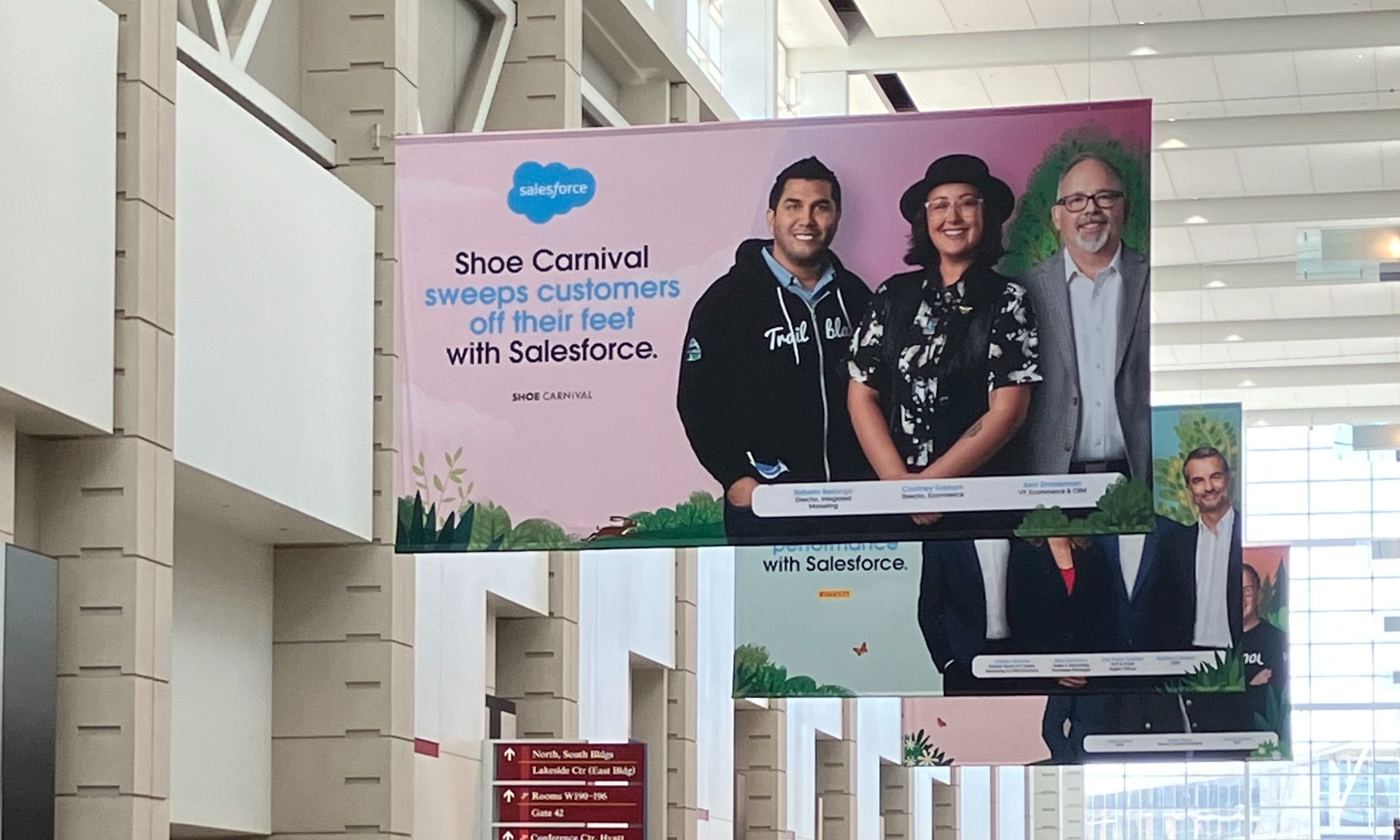
Salesforce launched a collection of new, generative AI-related products at Connections in Chicago this week. They included new Einstein Copilots for marketers and merchants and Einstein Personalization.
To better understand, not only the potential impact of the new products, but the evolving Salesforce architecture, we sat down with Bobby Jania, CMO, Marketing Cloud.
Dig deeper: Salesforce piles on the Einstein Copilots
Salesforce’s evolving architecture
It’s hard to deny that Salesforce likes coming up with new names for platforms and products (what happened to Customer 360?) and this can sometimes make the observer wonder if something is brand new, or old but with a brand new name. In particular, what exactly is Einstein 1 and how is it related to Salesforce Data Cloud?
“Data Cloud is built on the Einstein 1 platform,” Jania explained. “The Einstein 1 platform is our entire Salesforce platform and that includes products like Sales Cloud, Service Cloud — that it includes the original idea of Salesforce not just being in the cloud, but being multi-tenancy.”
Data Cloud — not an acquisition, of course — was built natively on that platform. It was the first product built on Hyperforce, Salesforce’s new cloud infrastructure architecture. “Since Data Cloud was on what we now call the Einstein 1 platform from Day One, it has always natively connected to, and been able to read anything in Sales Cloud, Service Cloud [and so on]. On top of that, we can now bring in, not only structured but unstructured data.”
That’s a significant progression from the position, several years ago, when Salesforce had stitched together a platform around various acquisitions (ExactTarget, for example) that didn’t necessarily talk to each other.
“At times, what we would do is have a kind of behind-the-scenes flow where data from one product could be moved into another product,” said Jania, “but in many of those cases the data would then be in both, whereas now the data is in Data Cloud. Tableau will run natively off Data Cloud; Commerce Cloud, Service Cloud, Marketing Cloud — they’re all going to the same operational customer profile.” They’re not copying the data from Data Cloud, Jania confirmed.
Another thing to know is tit’s possible for Salesforce customers to import their own datasets into Data Cloud. “We wanted to create a federated data model,” said Jania. “If you’re using Snowflake, for example, we more or less virtually sit on your data lake. The value we add is that we will look at all your data and help you form these operational customer profiles.”
Let’s learn more about Einstein Copilot
“Copilot means that I have an assistant with me in the tool where I need to be working that contextually knows what I am trying to do and helps me at every step of the process,” Jania said.
For marketers, this might begin with a campaign brief developed with Copilot’s assistance, the identification of an audience based on the brief, and then the development of email or other content. “What’s really cool is the idea of Einstein Studio where our customers will create actions [for Copilot] that we hadn’t even thought about.”
Here’s a key insight (back to nomenclature). We reported on Copilot for markets, Copilot for merchants, Copilot for shoppers. It turns out, however, that there is just one Copilot, Einstein Copilot, and these are use cases. “There’s just one Copilot, we just add these for a little clarity; we’re going to talk about marketing use cases, about shoppers’ use cases. These are actions for the marketing use cases we built out of the box; you can build your own.”
It’s surely going to take a little time for marketers to learn to work easily with Copilot. “There’s always time for adoption,” Jania agreed. “What is directly connected with this is, this is my ninth Connections and this one has the most hands-on training that I’ve seen since 2014 — and a lot of that is getting people using Data Cloud, using these tools rather than just being given a demo.”
What’s new about Einstein Personalization
Salesforce Einstein has been around since 2016 and many of the use cases seem to have involved personalization in various forms. What’s new?
“Einstein Personalization is a real-time decision engine and it’s going to choose next-best-action, next-best-offer. What is new is that it’s a service now that runs natively on top of Data Cloud.” A lot of real-time decision engines need their own set of data that might actually be a subset of data. “Einstein Personalization is going to look holistically at a customer and recommend a next-best-action that could be natively surfaced in Service Cloud, Sales Cloud or Marketing Cloud.”
Finally, trust
One feature of the presentations at Connections was the reassurance that, although public LLMs like ChatGPT could be selected for application to customer data, none of that data would be retained by the LLMs. Is this just a matter of written agreements? No, not just that, said Jania.
“In the Einstein Trust Layer, all of the data, when it connects to an LLM, runs through our gateway. If there was a prompt that had personally identifiable information — a credit card number, an email address — at a mimum, all that is stripped out. The LLMs do not store the output; we store the output for auditing back in Salesforce. Any output that comes back through our gateway is logged in our system; it runs through a toxicity model; and only at the end do we put PII data back into the answer. There are real pieces beyond a handshake that this data is safe.”
-
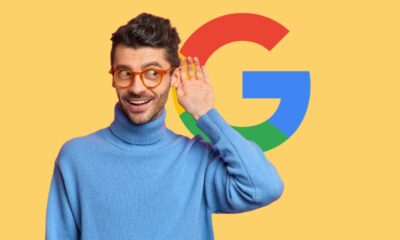
 SEO7 days ago
SEO7 days agoGoogle’s Revamped Documentation Shows 4 Reasons To Refresh Content
-
SEARCHENGINES5 days ago
Daily Search Forum Recap: August 26, 2024
-
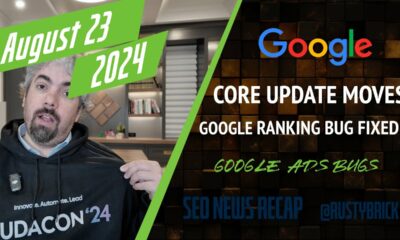
 SEARCHENGINES7 days ago
SEARCHENGINES7 days agoGoogle Ranking Bug Fixed, August Core Update Swings, AI Overviews, Google Ads Bug & More
-

 WORDPRESS7 days ago
WORDPRESS7 days agoHow to Secure Your WordPress Store
-
SEARCHENGINES4 days ago
Daily Search Forum Recap: August 27, 2024
-

 AFFILIATE MARKETING7 days ago
AFFILIATE MARKETING7 days agoBusiness Owners are Batting 1,000 With This All-in-One Management Hub
-
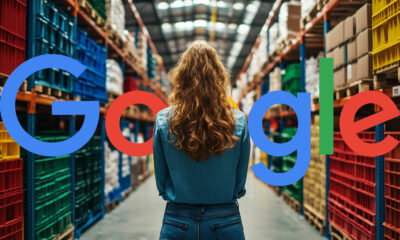
 SEARCHENGINES6 days ago
SEARCHENGINES6 days agoGoogle Migrating All To Google Merchant Center Next By September
-
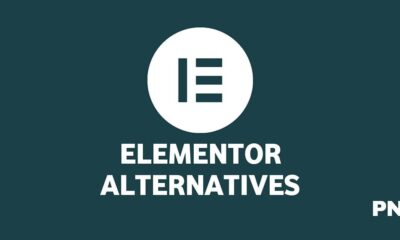
 WORDPRESS5 days ago
WORDPRESS5 days ago9 Best Elementor Alternatives 2024 (Faster Page Builders)














